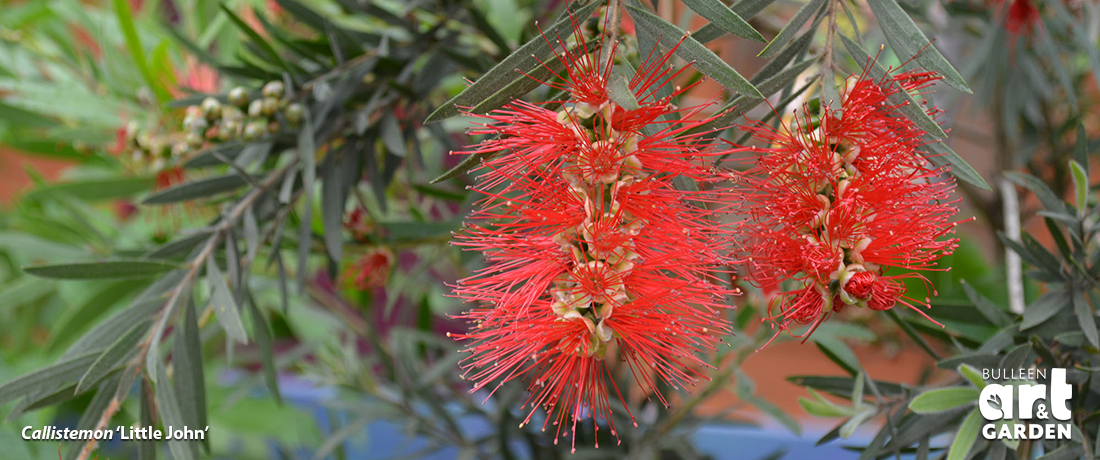 Important note about plant availability. Important note about plant availability.There are hundreds of factsheets on our website provided for your information. Not all plants will be available at all times throughout the year. To confirm availability please call (03) 8850 3030 and ask for the nursery. |
One of the most profuse flowering of all our native plants, the bottlebrush is both beautiful and tough. Coping with waterlogging and drought, it is an easy plant to grow in your garden, providing colour and habitat for wildlife. Callistemons vary from small shrubs to small trees and everything in between. Colours range from white and cream through to pale pinks, brilliant reds and purples. There are over 40 species and an ever-increasing number of cultivars and hybrids to choose from. Callistemons generally bloom spring to early summer and the flowers hang around for quite some time.
Watering
Water in well when planting, using a weak seaweed solution is beneficial. Do follow up watering (but not if it has been raining) for the next 6 weeks to allow for ideal growing conditions. You want the plant to get established and for the roots to grow well. Hot dry windy conditions may require extra watering. Once well established, Callistemons can survive extended dry periods, but all grow and flower better with the occasional good soak.
Light and Location
Callistemons usually prefer full sun, but they can take some shade. A minimum of 6 hours full sun is preferable. Many callistemons can survive (and indeed thrive) in boggy and wet conditions. They are often a ‘go to’ native if you are looking for something to survive a damp spot. They can also survive saline soils, which makes them a great choice for gardens near the seaside.
Temperature
New growth can be damaged by frost. They can cope with very light frost, but not heavy frosts. They are heat tolerant.
Fertilising
Use a low phosphorus native fertiliser in both spring and autumn.
Maintenance
• Tip pruning regularly keeps them dense and attractive. Prune just behind the old flowers as they are finishing.
• If the plant has become leggy or unsightly, rather than removing the entire tree / shrub, try cutting it back almost to the ground after the last frost has gone. Often the result will be a very vigorous flush of new growth.
• Mulching) is very beneficial for callistemons. They like the moisture retaining qualities and the additional organic material supplied to the soil as it breaks down. Keep the mulch away from the stem of the plant to avoid any chance of collar rot.
Pests and Diseases
• Can get sooty mould as a result of an aphid or scale infestation. Treat aphids with white oil. Eco oil or pyrethrum (or release predators using IPM)
• Myrtle rust: treat with a systemic fungicide
• Sawfly Larvae. These can quickly skeletonise a plant. Treat with Success or Dipel.
• Webbing moth / Webbing caterpillar: Less common on Callistemons, but can occasionally flare up. Cut off infested branches and dispose into rubbish – not compost. Success and Dipel has limited effectiveness.



